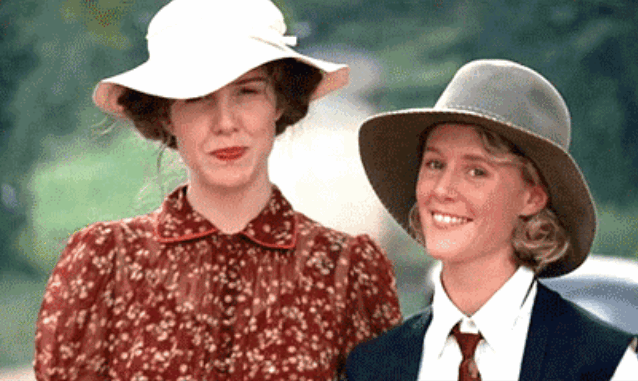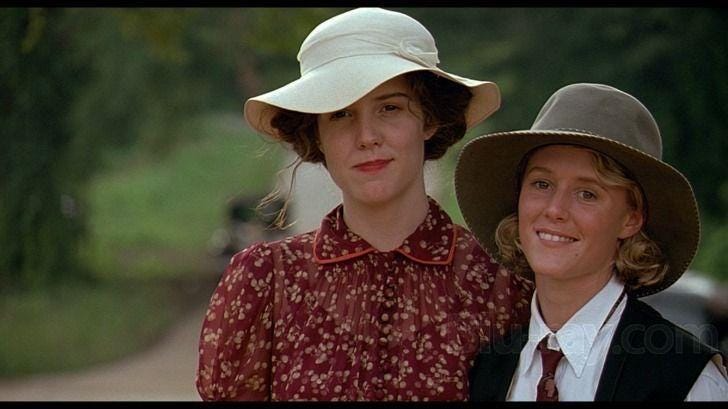
The ending of Fried Green Tomatoes is not just the conclusion of a story—it’s the emotional crescendo of a film rich with memory, loss, and resilience. It ties together decades of grief, friendship, and self-discovery while leaving viewers with a profound sense of warmth and wonder. As Evelyn Couch stands by Ninny’s side in the final scenes, and as the stories of the past and present converge, the film delivers a message about the legacy of love, the healing power of storytelling, and the freedom that comes from owning one’s truth.
Revisiting Whistle Stop Through Evelyn’s Eyes
As the film reaches its close, Evelyn visits Ninny Threadgoode—now living in a nursing home—and learns a stunning truth: the house she grew up loving is gone. Evelyn offers her a place to live, signifying how much she’s transformed since their first meeting. This is not the timid, invisible woman we saw at the beginning of the film. Evelyn has become confident, assertive, and deeply loyal—someone capable of compassion, action, and even defiance.
Evelyn’s offer to take Ninny in is more than a generous act. It symbolizes the completion of a deep emotional transformation. By choosing to care for Ninny, Evelyn is, in effect, choosing herself—rejecting the old life that made her feel small and instead embracing the fierce, bold spirit that Ninny’s stories awakened within her.
The Final Revelation: Who Was Idgie?
One of the most debated and quietly haunting elements of the ending is the implication that Ninny is Idgie Threadgoode. While this is never confirmed outright, there are strong hints. Ninny seems to know far more than she should. Her reactions, especially her quiet smile when Evelyn finds a jar of honey on Ruth’s grave with a note signed “The Bee Charmer,” suggest a deeper truth hiding in plain sight.
If Ninny and Idgie are one and the same, it means that the film’s narrator has not only recounted a life of love, loss, and rebellion but has also lived it. The implication redefines her storytelling not as distant remembrance but as personal confession—one that allows her to relive, and perhaps finally share, a life that had to remain hidden. It also reframes the movie as not merely an account of the past, but as an act of liberation in the present.
The Jar of Honey and the Mystery of the Bee Charmer

The final shot—Ruth’s grave with a fresh jar of honey beside it—is one of the most touching in the film. Accompanied by a note from “The Bee Charmer,” this moment brings the entire story full circle. For those who’ve been watching closely, “The Bee Charmer” is what Idgie once called herself when wooing Ruth, showcasing her boldness and love through a fearless encounter with bees.
Seeing that note in the present suggests that Idgie (or Ninny, if they are the same) still visits Ruth’s grave, still keeps that love alive, and still honors the past. It’s a silent, sacred moment that affirms that some bonds do not weaken with time. Love, when it’s real, endures beyond death.
Justice Served, Even If the Law Wasn’t Watching
Another theme the ending reinforces is justice outside the law. The mystery surrounding Frank Bennett’s disappearance is quietly but definitively resolved through flashbacks: Sipsey killed him in defense of Ruth, and the Whistle Stop Café family covered it up, even going so far as to cook and serve his remains to the investigating officer.
While morally complex, this act of vigilant justice is portrayed not as sinister, but as righteous. The women of Whistle Stop protected one another when no one else would. The ending doesn’t condemn them—it celebrates their loyalty. It’s not about vengeance; it’s about survival and love in a world where the system often failed women and people of color.
Evelyn’s Liberation is the Audience’s, Too
Perhaps the most satisfying resolution lies in Evelyn’s arc. When we first met her, she was passive and diminished by her husband’s neglect and the disinterest of the world. Through Ninny’s tales—and her growing friendship—Evelyn reclaims her agency. She breaks free of her old life, finds courage, and begins to live boldly.
By the end of the film, Evelyn isn’t just helping others—she’s found herself. She has become a real-life Idgie in her own way: brave, funny, compassionate, and utterly unafraid to challenge norms.
A Quiet but Radical Ending
What makes Fried Green Tomatoes’ ending so powerful is its gentleness. It doesn’t rely on melodrama or shocking twists. Instead, it delivers emotional closure with grace and dignity. It lets its women live full lives—messy, rebellious, sometimes heartbreaking, but rich in meaning. It gives space for grief but doesn’t let it rule. It honors love that doesn’t always fit in neat boxes. And it affirms that storytelling is a sacred act, one that can heal, connect, and awaken.
The ending of Fried Green Tomatoes is not about tying every plot thread into a neat bow. Instead, it honors the ambiguity, complexity, and strength of its characters. It whispers rather than shouts, but its message is loud and clear: our stories matter, our friendships save us, and love—however it looks—endures.
It is a love letter to women who’ve lived in silence, to lives lived on the margins, and to the power of memory to preserve what the world tries to erase. The ending doesn’t just complete the story—it elevates it, reminding us that courage, loyalty, and joy can flourish even in the hardest of places.
